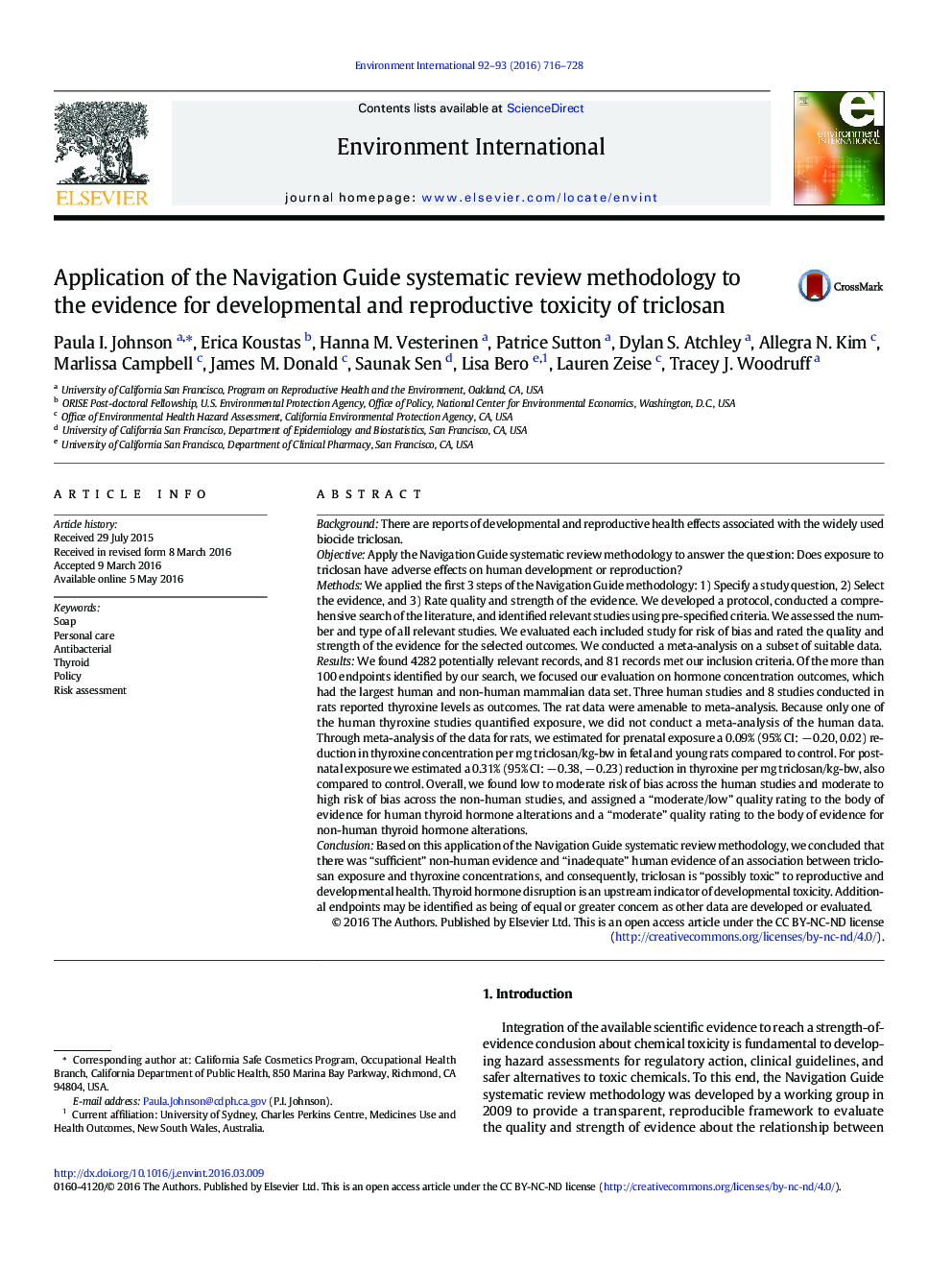| کد مقاله | کد نشریه | سال انتشار | مقاله انگلیسی | نسخه تمام متن |
|---|---|---|---|---|
| 6313120 | 1619037 | 2016 | 13 صفحه PDF | دانلود رایگان |
- The Navigation Guide was applied to evaluate adverse effects of triclosan.
- There was inadequate human evidence of an association between triclosan and T4.
- Meta-analysis indicated a triclosan-induced dose-dependent decrease in T4 in rats.
- Triclosan was rated “possibly toxic” to reproductive and developmental health.
BackgroundThere are reports of developmental and reproductive health effects associated with the widely used biocide triclosan.ObjectiveApply the Navigation Guide systematic review methodology to answer the question: Does exposure to triclosan have adverse effects on human development or reproduction?MethodsWe applied the first 3 steps of the Navigation Guide methodology: 1) Specify a study question, 2) Select the evidence, and 3) Rate quality and strength of the evidence. We developed a protocol, conducted a comprehensive search of the literature, and identified relevant studies using pre-specified criteria. We assessed the number and type of all relevant studies. We evaluated each included study for risk of bias and rated the quality and strength of the evidence for the selected outcomes. We conducted a meta-analysis on a subset of suitable data.ResultsWe found 4282 potentially relevant records, and 81 records met our inclusion criteria. Of the more than 100 endpoints identified by our search, we focused our evaluation on hormone concentration outcomes, which had the largest human and non-human mammalian data set. Three human studies and 8 studies conducted in rats reported thyroxine levels as outcomes. The rat data were amenable to meta-analysis. Because only one of the human thyroxine studies quantified exposure, we did not conduct a meta-analysis of the human data. Through meta-analysis of the data for rats, we estimated for prenatal exposure a 0.09% (95% CI: â 0.20, 0.02) reduction in thyroxine concentration per mg triclosan/kg-bw in fetal and young rats compared to control. For postnatal exposure we estimated a 0.31% (95% CI: â 0.38, â 0.23) reduction in thyroxine per mg triclosan/kg-bw, also compared to control. Overall, we found low to moderate risk of bias across the human studies and moderate to high risk of bias across the non-human studies, and assigned a “moderate/low” quality rating to the body of evidence for human thyroid hormone alterations and a “moderate” quality rating to the body of evidence for non-human thyroid hormone alterations.ConclusionBased on this application of the Navigation Guide systematic review methodology, we concluded that there was “sufficient” non-human evidence and “inadequate” human evidence of an association between triclosan exposure and thyroxine concentrations, and consequently, triclosan is “possibly toxic” to reproductive and developmental health. Thyroid hormone disruption is an upstream indicator of developmental toxicity. Additional endpoints may be identified as being of equal or greater concern as other data are developed or evaluated.
Journal: Environment International - Volumes 92â93, JulyâAugust 2016, Pages 716-728
